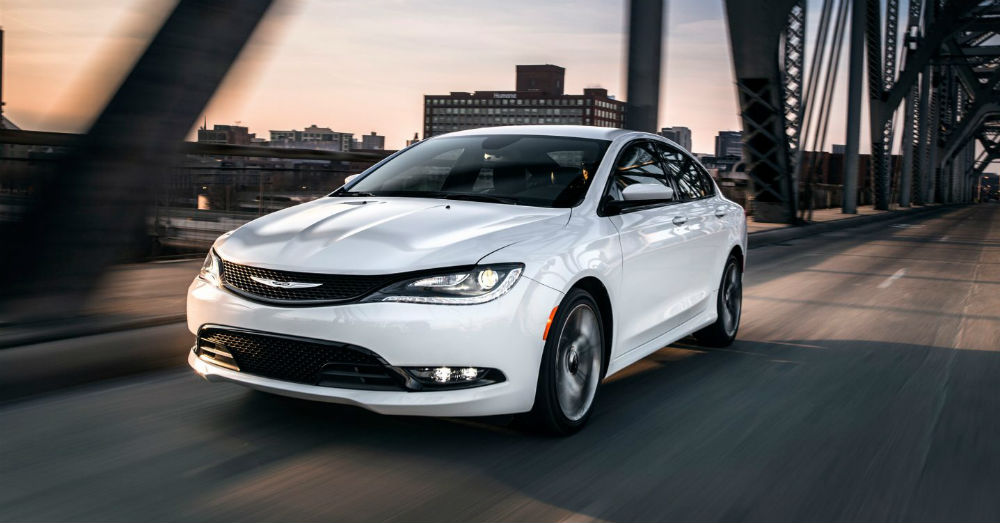When you’re searching for a new car, you’re inundated with flashy pictures and lists of features that are all intended to draw your attention toward a specific car or a specific brand. They’re all vying for your attention, and they’re meant to attract you with their shiny newness. The “hey, look over here” approach works with cars, as people are more likely to remember the last car they saw versus the first. While most new cars on the market are designed well, are incredibly safe, and offer great bang for your buck, this isn’t the case with all of them.
Let’s face it, they don’t make ‘em like they used to, which can be both a good AND a bad thing. These days, cars are rushed to the market, in order to beat out the arrival of the competitors’ latest vehicle. Sometimes they’re crafted using shoddy materials, made by disgruntled employees, or constructed in a now defunct factory. Whatever the reason, not all cars are created equally, and not all new cars are all that desirable. There are plenty of studies and awards that direct new buyers to the cars they SHOULD buy, but very few directing us away from the cars we want to avoid.
Chrysler 200 – While it may boast a pretty fantastic gas mileage, this car isn’t exactly a top performer, and there are reasons for that. First, it depreciates very quickly, holding onto only 41% of its value after the first three years. Reports about the 2016 version praise the vehicle’s options, engine, and overall style, but none of those things pick up the slack for the crowded interior and the poor reliability ratings. Consumer Reports has labeled this one a dud, and so has J.D. Power and Associates. Move on.
Chevrolet Suburban – Sure, we live in a world where, most of the time, bigger is better, but this is not the case with the Suburban. It’s not only massive, but it feels like it. It’s overwhelming to drive, much less park, and it doesn’t have the power to back up its size. Similar in style to the GMC Yukon, the Yukon outperforms the Suburban in nearly every trial. It was awarded a tremendously low score when it comes to reliability and a pretty terrible overall rating. It’s also a gas hog; at over $2 a gallon, who wants that?!
Ford Focus – The Focus may be a popular model for the auto giant, but critics don’t like it. It scored in the negative in terms of reliability, and those who’ve gotten behind the wheel call it cramped and poorly designed. The ride itself is actually somewhat pleasant, and it gets great gas mileage, but the backseat is, pretty much, nonexistent. For a compact car, drivers have come to expect a lot more than the Focus has to offer, and the reviewers have noticed. It would be a great car for a road trip, you know, if you don’t want to take anyone else with you.
Jeep Cherokee – Not to be mistaken with the Grand Cherokee, this is the base model that doesn’t include the upgraded attention that makes this vehicle Grand. Expected to be worth only 33% of its original value after five years, the Cherokee is hardly worth the price drivers would pay to deck it out to its full potential. Criticized in nearly every area, including comfort, entry and exit, and visibility, the Cherokee gets high marks for its infotainment system and the off-roading capability. However, the off-roading capability requires tremendous upgrades from the base trim level. So, you can off road, but you’ll pay for it.
Nissan Pathfinder – When the world is turning to crossovers as their favorite mode of transportation, it’s kind of difficult to make a bad one, but Nissan manages with the newer, clunky version of the Pathfinder. What used to be one of their most popular models, as an SUV, has become a less popular version of itself since it became a crossover. Critics are saying the interior looks cheap, it handles terribly, and it lacks the power it previously possessed. With this one, you’ll find your path, just very very slowly.
A new vehicle is supposed to be a joyous purchase, the second biggest financial decision you’ll make. However, nothing overshadows the joy of a new car like hating it a month after you drive off the lot. Of course, each driver is different and the aforementioned bad qualities won’t bother some people. This is why drivers should take multiple test drives to ensure they don’t suffer the dreaded buyer’s remorse before the first payment is due.
This post may contain affiliate links. Meaning a commission is given should you decide to make a purchase through these links, at no cost to you. All products shown are researched and tested to give an accurate review for you.

